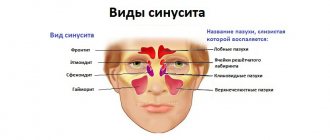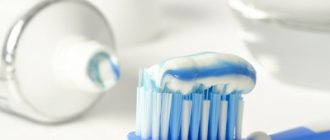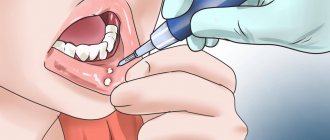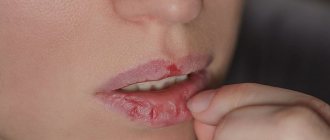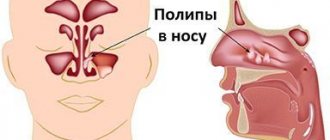Published: 10/06/2021 13:40:00 Updated: 10/06/2021
Rhinitis is an inflammation of the upper respiratory tract, namely the mucous membrane of the nasal cavity. The pathology is accompanied by impaired nasal breathing, nasal discharge and congestion, weakening or loss of smell, itching in the nose, sneezing, watery eyes and sore throat. Rhinitis can be an independent disease or a symptom of another disorder.
Most people consider rhinitis to be a common runny nose and do not attach much importance to it. However, its symptoms may warn of serious health problems and complications if not properly treated. Therefore, it is recommended to consult a doctor if rhinitis does not go away after a few days or if it worsens.
Causes and classification of rhinitis
Risk factors for developing the disease include a decrease in general immunity, unfavorable living conditions (strong or prolonged exposure to irritants) and individual intolerance to certain allergens.
According to the course of the disease, they are distinguished:
- acute rhinitis (occurs after the initial exposure to a pathogen or allergen and lasts up to 3 days);
- chronic rhinitis (usually develops as a complication of an acute process and persists for several weeks and even years).
Depending on the cause, there are:
- allergic rhinitis, which develops when the nasal mucosa comes into contact with an allergen - pets, pollen, house dust, mite or yeast allergens. Symptoms can be seasonal (for example, with aggravation in spring, during the flowering period of plants) or year-round;
- non-allergic rhinitis is caused by hypothermia or sudden changes in humidity, viral infections, strong irritants (strong odors, smoke, dust), certain medications (including vasoconstrictor drops), food allergies, disruption of certain organs (thyroid diseases, gastroesophageal reflux), and rhinitis of pregnant women and senile rhinitis are also distinguished;
- Vasomotor rhinitis is not associated with either allergens or pathogens, and develops with hyperactivity and dilation of the blood vessels of the nasal cavity wall. The cause is considered to be an imbalance of the autonomic nervous system, which cannot cope with the function of “inhibiting” the reaction of the nasal mucosa to environmental conditions. The causes may be stress, physical activity, endocrine diseases, as well as hereditary predisposition. In a third of such patients, the disorder is chronic, and in half it manifests itself to a moderate or severe degree.
The causes of rhinitis in children are considered to be imperfect immunity and unfavorable environmental conditions. In addition, this disease in children can be caused by a deviated nasal septum, diathesis, adenoids and polyps, foreign bodies in the nose, sinuses, and long-term use of vasoconstrictor drops.
Dry nose: causes
The causes of mucosal disease can be divided into external and internal.
External reasons include climatic features of the place of residence of an adult or child: residents of latitudes with a dry climate (where the humidity level does not exceed forty percent) with high or, conversely, too low air temperatures constantly experience a feeling of dryness in the nose. We experience a similar condition in the autumn-winter period, when the central heating system works intensively, which, of course, dries out our mucous membranes. Unpleasant sensations in the nasal cavity occur if you stay in an air-conditioned room for a long time and do not ventilate it.
Symptoms of the disease also appear when working in “harmful” industries with polluted air or impurities of harmful substances in it. Similar symptoms occur during a long stay in a smoky room and during prolonged smoking by the smoker himself.
There are also many situations where the main reason for the feeling of dry mucous membranes is not related to external factors. Such reasons include:
- use of certain medications (antihistamines, hormonals, antibiotics);
- taking vasoconstrictor drugs;
- chronic atrophic rhinitis;
- allergic reaction;
- alcohol abuse;
- autoimmune diseases (for example, Sjogren's syndrome, when the glands of the nasopharynx are affected);
- scleroma of the nasal cavity;
- diabetes;
- pregnancy;
- high blood pressure;
- oncological diseases.
It is believed that the feeling of dryness in the nose caused by external causes is much easier to treat than internal ones.
Symptoms of rhinitis
According to the severity of symptoms, the following stages of acute rhinitis are distinguished:
- mild: lasts from several hours to 2 days, accompanied by discomfort in the nose and signs of malaise (chills, headache, temperature up to 37.5 C);
- medium: symptoms increase, clear discharge appears, nasal breathing is disrupted, lacrimation and sneezing, nasal congestion, headache, tinnitus appear;
- severe: purulent-mucous yellowish and greenish discharge is noted, while the general condition may improve, nasal breathing becomes easier.
The acute course of the disease lasts from 7 to 12 days.
Rhinitis is most severe in newborns due to the narrowness of the nasal passages and the inability to blow their nose.
Treatment of hypertrophic rhinitis
Comprehensive treatment of chronic hypertrophic rhinitis is necessary, including non-drug methods, physiotherapy, medication and surgery.
The patient is advised to exclude spicy, hot foods from the diet and limit easily digestible carbohydrates (sweets). Breathing exercises are useful, improving the function of the glands of the mucous membrane.
Endonasal physiotherapeutic techniques are used: UHF, ultraviolet irradiation, laser therapy, electrophoresis with solutions of zinc sulfate or calcium chloride.
For mild hypertrophy, sclerotherapy is prescribed: glucocorticoid hormones are injected into the inferior nasal concha (under its mucosa), the course consists of 8–10 procedures. It is possible to cauterize the hypertrophied mucosa with silver nitrate and other chemicals.
If the above methods are ineffective, surgical treatment of hypertrophic rhinitis is used. Various types of surgical interventions are used for this:
- submucosal disintegration (destruction) of the inferior turbinates using ultrasound;
- submucosal vasotomy, that is, destruction of areas of the choroid plexuses feeding the inferior turbinates;
- lower conchotomy (removal of the posterior section) using a gentle technique, accompanied by preservation of the anterior turbinates;
- endoscopic osteoconchotomy under microscopic control;
- lateroconchopexy - displacement of the concha to widen the nasal passages.
At the same time, the shape of the nasal septum can be corrected if it is bent.
The choice of the method of operation is made by the doctor, taking into account the clinical picture and severity of the disease. The criterion for successful treatment is the restoration of free nasal breathing, the disappearance of other complaints, and an improvement in the patient’s quality of life.
Complications of rhinitis
Postnasal drip is a consequence of any rhinitis in adults and children.
It is expressed in the flow of nasal secretions down the back of the throat into the lower respiratory tract, causing throat irritation and coughing. Other common consequences include the transition of acute rhinitis to a chronic form, inflammation of the underlying respiratory tract (laryngitis, pharyngitis, bronchitis), middle ear (otitis), paranasal sinuses (sinusitis), and lacrimal glands.
Atrophic rhinitis is a complication of a chronic disease and develops due to atrophy of the nasal mucosa against the background of a long-term inflammatory process. As a result, the normal ciliated epithelium, which secretes protective nasal mucus and is responsible for the sense of smell, is replaced by squamous epithelium, which does not have such functions.
Symptoms include:
- nosebleeds;
- perforation of the nasal septum;
- deformation of the nose and face;
- pain and a constant feeling of unpleasant odor in the nose (which is accompanied by bad breath);
- decreased or absent sense of smell;
- difficulty breathing through the nose due to the formation of crusts in the nose against the background of dry mucous membrane.
In newborns with rhinitis, there is a sharp difficulty or cessation of nasal breathing.
The child switches to mouth breathing, as a result, the sucking reflex and sleep are disrupted. Swallowing air leads to dyspeptic disorders (diarrhea, vomiting, belching). Oxygen starvation causes a slowdown in the development of psychomotor skills. Convulsions are observed due to muscle strain when reflexively throwing the head back to facilitate breathing. Due to the tendency for any inflammation to quickly spread, rhinitis in infants is accompanied by pharyngitis, stomatitis, otitis, tracheitis, bronchitis and bronchopneumonia.
Publications in the media
Deterioration in the functional activity of the nose leads primarily to oxygen starvation of the body (hypoxia), this is accompanied by headaches, poor health, fatigue and, as a result, metabolism is disrupted, immunity is reduced, and somatic disorders occur in the functioning of vital organs. The nose performs several important functions: it participates in the breathing process, cleans, moisturizes and warms the inhaled air, ensures normal ventilation of the lungs and gas exchange. We perceive odors through the olfactory neurons in the nasal cavity. Goblet cells of the nasal mucosa secrete mucus, which captures dust, allergens, mechanical impurities, the diameter of which in the inhaled air is more than 2 microns (8 microns), as well as microorganisms (including viruses, bacteria). On the surface of each mucosal cell there are special cilia that help cleanse the nose. 60% of microorganisms inhaled with air settle on the surface of the nasal mucosa. Every day, our nose filters more than a thousand liters of polluted, dusty air, while taking about 24,000 breaths per day.
If the nose is poorly cleaned, inflammatory processes occur. Deterioration in the clearance of the paranasal sinuses, causing sneezing and runny nose. Bacterial microflora is deposited on the mucous membranes, which is accompanied by purulent nasal discharge. In the future, inflammatory processes lead to the development of various diseases of the nose and paranasal sinuses, the most common are: rhinitis, sinusitis, sinusitis, frontal sinusitis. All decongestant drugs (anticongestants) for local nasal use can be divided into subgroups: a) adrenergic drugs; b) saline nasal solutions; c) soft forms for nasal use;
a) Adrenergic drugs: Naphazoline, Xylometazoline, Xylometasol, Ximetazoline, Tetrizoline, Phenylephrine, Ephedrine, etc.
Adrenergic drugs stimulate a-adrenergic receptors. The anti-edematous effect is realized due to vasoconstriction when applying the drug to the mucous membrane of the nasal passages and by reducing blood flow to the veins. Due to the vasoconstrictor effect, swelling, hyperemia, and exudation of the mucous membranes of the nose, paranasal sinuses and eustachian tube are reduced. This leads to relief and restoration of nasal breathing, impaired by rhinitis, flu, colds and allergic diseases. Prescribed for the treatment of patients with acute rhinitis of various etiologies, sinusitis, otitis and other colds, accompanied by difficulty in nasal breathing. With long-term use, the effect of the drugs decreases due to the phenomenon of tolerance, so after 3-5 days of use you should take a break for several days. There is a danger of decreased secretion, the development of dry mucosa and the formation of cracks into which pathogenic microflora easily penetrates. The disease may become chronic or secondary infections may occur.
Nafazolin is produced under the trade names - Naphthyzin, Sanorin, Nafazolin, Nafazol-Hemofarm. With topical application of solutions, vasoconstriction appears within 10 minutes and lasts up to 2–6 hours. For rhinitis, 1-3 drops of a 0.1% solution are administered into the nose of adults 2-3 times a day, children over 1 year old - 1-2 drops of a 0.05% solution 1-3 times a day. For nosebleeds, use tampons moistened with a 0.05% solution. Not recommended for use for chronic rhinitis.
Unlike other drugs, Sanorin is a white emulsion, which has a longer vasoconstrictor effect of 12 hours and causes less dryness of the mucous membrane. The emulsion contains naphazoline nitrate, eucalyptus essential oil, boric acid, and petroleum jelly.
Xylometazoline is produced under different trade names - Rinonorm, Xymelin, Galazolin, Toff Plus, Grippostat Rino, Snoop, Otrivin, DlyaNos.
1 ml contains 0.5 mg or 1 mg of xylometazoline hydrochloride, usually 0.1% or 0.05% solutions. The effect of the drug occurs within a few minutes and lasts from 5 hours to 10 hours. It is well tolerated even by patients with sensitive mucous membranes and does not interfere with the function of the ciliated epithelium.
Xylomethazole is available in the form of 0.1% nasal gel, 15 g. It is used by patients with pronounced symptoms of swelling of the mucous membranes of the nose and nasopharynx. Nasal gel is applied to the mucous membrane of each half of the nose at a dose of 100-200 mg 1-3 times a day. The course of treatment is 3-5 days. To avoid habituation phenomena, repeating the course (but not more than once) is allowed after 5-7 days.
Oxymetazoline (Nazivin, Nazol) belongs to the group of local vasoconstrictors (decongestants) and does not have a systemic effect. Contained in medicinal products as a salt of oxymetazoline hydrochloride, it has a long-lasting local vasoconstrictor effect. The effect of the drug begins within 5-10 minutes after injection and lasts for 10-12 hours. The excipients polyethylene glycol and propylene glycol have a softening effect on the irritated nasal mucosa and protect it from excessive drying. When applied locally and in therapeutic concentrations, preparations containing oxymetazoline do not irritate the mucous membrane and do not cause hyperemia. It is used for acute rhinitis (including allergic), vasomotor rhinitis, paranasal sinusitis, eustachitis, otitis media. It is also used for diagnostic purposes under the supervision of a physician to narrow the vessels of the nasal mucosa. The nasal spray is available in the form of a 0.05% solution and is intended for use in the nose in adults and children over 6 years of age, 1 injection into each nasal passage 2-3 times a day, apply for 3-5 days.
Tizin - nasal drops in 1 ml contain 1 mg or 0.5 mg of tetrizoline hydrochloride; Available in glass dropper bottles of 10 ml. After topical application, the vasoconstrictor effect develops after approximately 1 minute and lasts from 4 to 8 hours; There is practically no absorption. Use intranasally, instill into each nostril with the head positioned slightly backward, as needed, but not more than once every 4 hours. Adults and children over 6 years old - 2-4 drops (0.1%) in the nose, children 2-6 years old - 2-3 drops (0.05%). The course of treatment is no more than 3-5 days. Reuse is possible only after several days.
Phenylephrine (Mezaton) as a vasoconstrictor is found in many drugs marketed under the trade names Rinopront, Adrianol, Vibrocil. Phenylephrine is a sympathomimetic amine, selectively stimulates a1-adrenergic receptors in the cavernous venous tissue of the nasal mucosa, phenylephrine has a moderate vasoconstrictor effect. Quickly and permanently eliminates swelling of the nasal mucosa and paranasal sinuses.
Long-term use of drugs with phenylephrine can lead to a decrease in pharmacological action, cause swelling of the nasal mucosa and nasal congestion.
Rinopront is available in capsules, 1 capsule contains phenylephrine hydrochloride 20 mg and carbinoxamine hydromaleate 4 mg. Carbinoxamine has an antihistamine effect; the drug also reduces capillary permeability. Use 1 capsule 2 times a day. In pediatric practice, Rhinopront syrup is used; children from 1 to 5 years old use 1 scoop, from 5 to 12 – 2 scoops, and from 12 to 5 years – 3 scoops. The duration of the pharmacological effect is 10-12 hours. Vibrocil contains phenylephrine 2.5 mg and dimethindene maleate 250 mcg. Available in the form of intranasal drops, gel and spray. Vibrocil reduces nasal discharge and helps cleanse the nasal passages, without disturbing the physiological functions of the ciliated epithelium and nasal mucosa.
Dimetindene, an antagonist of histamine H1 receptors, has antiallergic and antipruritic effects. Effective when used in low doses, well tolerated. Before administering the drug, you should carefully clean your nose. The drug is instilled into children under 1 year old - 1 drop, from 1 year to 6 years old - 1-2 drops and over 6 years old and adults 3-4 drops in each nostril 3-4 times a day. Spray and gel are prescribed to children over 6 years of age and adults. Spray 1-2 injections into each nostril 3-4 times a day, apply the gel to the nasal mucosa.
Adrianol contains phenylephrine chloride and trimazolin, vasoconstrictors and decongestants. When using Adrianol, nasal breathing is normalized and pressure in the paranasal sinuses and middle ear is reduced. Directions for use: infants 1 drop, from 1 to 5 years old – 2 drops in each nasal passage, children over 5 years old and adults 1-3 drops in each nasal passage 4 times a day, no more than one week, then a break of several days.
b) Nasal saline solutions
"Aquamaris" contains sterilized isotonic sea water with natural microelements and does not contain preservatives. Provides cleaning and maintains the normal physiological state of the nasal mucosa. Promotes liquefaction and removal of exudate, removes pathogenic microorganisms, improves blood circulation and the function of the ciliated epithelium in the nasal passages. Used as both a medicinal and a hygienic product
“Dolphin” is a special device (a bottle-irrigator with an endonasal attachment) for nasal hygiene, containing a marine environmentally friendly mineral composition identical in humidity, fluidity and composition to the World Ocean.
Rinsing the nose 1-2 times a day relieves inflammation, speeds up recovery and shortens the time required to use vasoconstrictor medications. Duration of use is from 1 week to a month. If necessary, the procedure is increased to 3-4 times a day. Used in combination therapy for inflammatory and allergic processes, for prevention purposes, for hygiene with high concentrations of dust, gases, allergens in the inhaled air.
"Salin" - 0.65% sodium chloride solution in the form of a nasal spray for hygienic care of the nasal cavity. Used to cleanse the nasal cavity of excess mucus or used to moisten it in case of excessive dryness of the nasal mucosa by 1-2 sprays into each nasal passage.
c) Soft forms for nasal use (ointment, cream, oils)
Rhino-factor cream contains original bases of animal and plant origin, clove, eucalyptus, peppermint oils, and the patented Pegus propolis component. The action of the cream is based on powerful reflex stimulation of the nasal mucosa, as a result of which excess secretion of mucus is reduced, swelling of the mucous membrane and pain are reduced, and the vascular wall is strengthened. The pegus component from propolis has a pronounced bactericidal and antiviral effect. The cream is applied in a small volume to the mucous membrane of each nasal passage 2-3 times a day. It is not recommended to use the cream for more than 5 days in a row; to restore the sensitivity of the nasal mucosa, be sure to take a break for 1-2 days. For inflammatory diseases of the respiratory system, the cream is rubbed into the corresponding biologically active points of the face. If Rhino-Factor cream gets into your eyes, rinse them with running water.
Rinolex - the drug is applied locally after preliminary cleansing of the nose, by spreading the nasal passages with ointment 3-4 times a day. 1 g ointment contains: 30 mg Ephedrine hydrochloride (ephedrine); 50 mg Sulfathiazole; 75 mg Sodium hydrogen carbonate.
Pinosol is available in the form of: nasal drops in a 10g solution containing: 0.3752g oleum Pini silvestris (pine oil), 0.1g menthae piperitae oil, 0.05g eucalypti oil, 0.0032r, 0.002r azulenum, 0.17g vitamin E ; — 10g nasal ointment contains 0.07225g menthol, eucalypti oleum 0.4325g, pini silvestris oleum 0.685g, 0.02175g thymol, 0.2885g vitamin E; — 10 g of nasal cream contains Pini silvestris oleum 0.38 g, eucalypti oleum 0.1 g, thymol 0.0032 g and vitamin E 0.17 g. Pinosol has an antiseptic, anti-inflammatory and antimicrobial effect, improves blood circulation and helps restore functions in the nasal mucosa.
Doctor Nosov is a soft cream containing extracts of medicinal plants, propolis and essential oils. Apply as needed 3-5 times a day.
Based on eucalyptus oil, YUST has developed a unique product - Oikasol spray. A plant-based bactericidal active complex (essential oils of eucalyptus, peppermint, rosemary, mountain pine and clove), valuable components of eucalyptus are especially important for the respiratory system. Oikasol has a beneficial effect on the bronchi and has a disinfecting and cleansing effect. Oykasol is especially recommended for people who are forced to often or for a long time stay in a smoky room (employees of offices, public institutions), as well as for those who, due to their profession, are constantly exposed to the harmful effects of dust (road workers, construction workers, etc.), and who often experience a sore throat and dry mucous membranes. In this case, Oikasol is the best assistant. It perfectly purifies the air, neutralizes tobacco smoke and other unwanted odors. Essential oils of mint, rosemary, and eucalyptus, which are part of Oikasol, promote concentration, increase efficiency, and reduce fatigue in people with intellectual work. Oikasol is also an excellent prophylactic during epidemics of colds and flu. It is enough to apply Oykasol on clothes and a handkerchief 2-3 times a day. For allergy sufferers, the spray prevents sneezing and runny nose from pollen. In heavy smokers, it reduces the harmful effects of nicotine on the bronchi. An additional advantage of Oikasol is that it is not an aerosol, that is, it does not contain ozone-depleting substances, and can be used all year round.
G). Additional agents used intranasally
Sinupret drops for oral administration, containing a hydroalcoholic extract from gentian root, primrose and elderberry flowers, sorrel and verbena herbs, has a secretolytic, anti-inflammatory effect, helps remove exudate from the paranasal sinuses, reduces swelling of the mucous membrane and increases its resistance to exogenous pathogens factors. Used for acute and chronic sinusitis. Available in dropper bottles with a dosing device.
Proper timely treatment and the use of medications from several groups will quickly relieve inflammation, restore the physiological functions of the nose, and the patient suffering from a runny nose will feel the ease of free breathing.
Diagnosis of rhinitis
To make a diagnosis, a clinical examination by a specialist with rhinoscopy is sufficient.
To assess the general condition of the patient, a general blood test, fluoroscopy of the nasal cavity and paranasal sinuses are performed. To confirm allergic rhinitis, a consultation with an allergist is necessary. Skin tests are prescribed to determine the following types of allergens:
- household: house dust, mites, molds, hair and epithelium of pets;
- plant: pollen of trees and weeds;
- food: vegetables, fruits and citrus fruits, legumes, melons, nuts, fish and seafood, meat, cereals, sesame seeds, baby formula.
In young children, identifying allergic rhinitis is difficult, since parents first begin to treat the child for an inflammatory disease.
If an infection is suspected, tests are performed to detect the RNA of influenza viruses, evaluate the level of immunoglobulins, and also examine smears from the nasal mucosa (rhinocytogram), nasal sinuses or oropharynx, and sputum samples.
In some cases, additional diagnostics are carried out: CT scan of the nasal sinuses, endoscopy of the nasal cavity, rhinopneumometry, cytological examination of the nasal mucosa, biochemical blood test.
Treatment of atrophic rhinosinusitis
There are no controlled studies evaluating treatments for atrophic rhinosinusitis, and available data are limited to observational studies and case reports.
Patients are recommended to rinse their nose on an ongoing basis to prevent the formation of new crusts and dryness of the already atrophied mucous membrane. It is better to rinse your nose with a warmed isotonic solution at least twice a day. It is recommended to use devices in the form of cylinders, watering cans (Dolphin, Revyline Nasal and similar products). The nasal cavity should be rinsed with a sufficient volume of solution (> 200 ml in each half of the nose with one rinse).
Xylitol saline sprays (such as Xlear) also have beneficial effects when used regularly.
After rinsing the nose, it is recommended to lubricate the mucous membrane with oils, creams and ointments. Acceptable products include petroleum jelly and glycerin.
There is insufficient data on the effectiveness of antibiotics added to rinsing solutions for atrophic rhinosinusitis. There are only anecdotal case reports and small patient series in which this treatment has been shown to be useful. It is not yet possible to recommend it to all patients on a regular basis; further study of the issue is required.
When an antibiotic is added to therapy, it should be selected based on current nasal culture. The duration of nasal rinsing with antibiotics varies. There is a conditional recommendation - until the patient stops noticing purulent discharge from the nose.
The use of mupirocin as an intranasal ointment is also recommended. The duration of the course also varies and is determined by the doctor in each specific case.
For patients with secondary atrophic rhinosinusitis and active inflammation in the nose, some researchers recommend the use of glucocorticoids in the form of nasal sprays or rinses, while others are categorically against this prescription.
In case of atrophic rhinosinusitis, any vasoconstrictor agents, both oral and local, are contraindicated, as they lead to an even greater deterioration in the blood supply to the nasal mucosa.
Several types of surgical interventions have been proposed. Procedures included temporary closure of the nostrils to facilitate epithelial repair (Young's procedure), surgical implantation of acrylic, Teflon, or polyethylene materials to reduce nasal volume, and procedures involving the injection of allogeneic bone, fat, or placental tissue. Because adequate scientific research has not been conducted, these procedures are not recommended.
Forecast
In many cases, atrophic rhinosinusitis persists for life. There is evidence that the “wet” form of secondary atrophic rhinosinusitis in some patients spontaneously “burns out” and turns into “dry”.
Prevention
It is impossible to avoid nasal disease, but reducing the risk is quite possible. For this:
- protect yourself from the cold. In itself, it is not the cause of disease, it just affects the blood vessels - they narrow and thereby make the mucous membranes more vulnerable;
- wash with saline solution or clean water. This recommendation is especially relevant during seasonal epidemics and active flowering of plants. Water and solution help clear passages of bacteria and allergens, reducing the risk of developing respiratory disease;
- stick to proper nutrition, this will provide the immune system with the components it needs;
- consume more vitamins, this also strengthens the immune system.
Remember: the symptoms of nasal diseases are very similar, it is impossible to diagnose yourself, but it is quite possible to get complications. Therefore, if you suspect that you are worried about more than a simple runny nose, make an appointment with an otolaryngologist. Registration is possible by phone or in the feedback form.
Eczema of the nasal vestibule
All forms of the disease are characterized by stages in the development of clinical manifestations - evolutionary polymorphism. At the first stage (erythematous), there is acute redness of the skin on the vestibule of the nose, swelling, itching and burning sensation. In some cases, subjective sensations are so strong that they lead to sleep disturbances and other neurotic disorders. When you touch the affected areas, acute pain appears; at rest, there is often no pain syndrome. With microbial and fungal forms of eczema, clearly defined boundaries between the affected and healthy tissues are visible, the process is often asymmetrical.
On the 2-3rd day from the onset of the disease, against the background of primary signs of inflammation, pustules and vesicles filled with turbid liquid appear - eczema passes into the papulovesicular stage. Elements with different etiopathogenetic variants of pathology have different characteristics. Their size varies from 1-2 mm to 1 cm in diameter, color - from light yellow to brown. A characteristic feature of seborrheic eczema is the fusion of pustules and vesicles to form so-called “garlands” or “rings”.
After a few more days, the weeping stage begins - the elements of the skin rash open, leaving behind “serous wells” - specific erosions, from which a moderate amount of exudate is released. The latter leads to maceration and enhances inflammatory reactions. The largest number of lesions occurs in the corners of the nostrils.
The next stage is cortical. It is accompanied by drying out of the “wells”, the formation of purulent crusts or scales over the affected skin, excoriation, and lichenification. In the microbial form, gray-yellow crusts almost completely cover the tissues, and on the periphery there is a pronounced rejection of the stratum corneum of the epidermis. In other forms, areas of “clearing” occur.
The total duration of acute eczematous lesions of the nasal vestibule does not exceed 15-20 days. After this, the crusts are rejected, and the disease becomes chronic. Clinically, chronicity is manifested by infiltration and induration of the skin of the vestibular part of the nose, limited areas of increased dryness, and cracks. Peeling, itching, and burning persist, but become less noticeable. With idiopathic eczema, secondary depigmented or pigment-vascular spots are formed, gradually increasing in size.
Is it possible to get nasopharyngitis from a sick person?
When the disease is caused by a viral infection, it is contagious and is transmitted from an infected person to an uninfected person through particles of fluid (saliva or nasal secretions) when coughing or sneezing or when breathing, since viruses can be in the exhaled air of an infected person. Thus, the main mechanism of infection with nasopharyngitis is airborne.
The lifespan of nasopharyngitis pathogens outside the human body can vary from several minutes to several hours.
